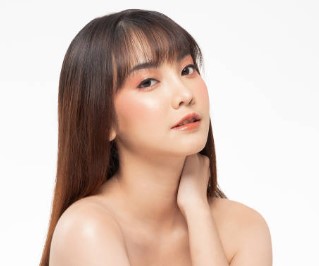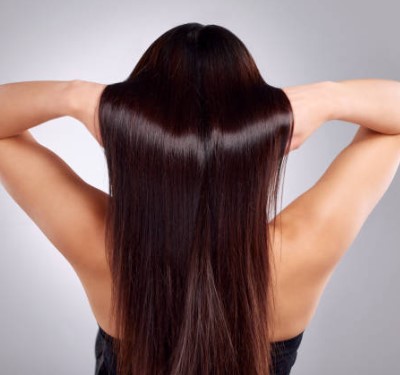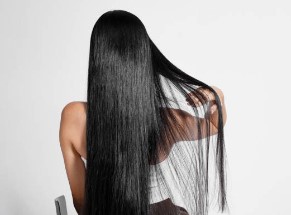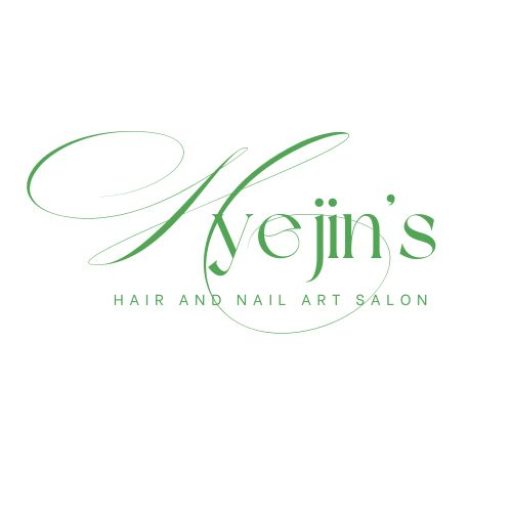Hair Rebonding Origin : From Japan to Global Beauty Trend
For many women in Asia, silky, pin-straight hair is more than just a style -it’s a statement. It symbolizes elegance, confidence, and timeless beauty. One treatment that has made this look possible is hair rebonding, a salon service that has transformed the way we approach hair care.
At Hyejin Beauty Salon, we specialize in hair rebonding, and we know that understanding its origins makes the treatment even more meaningful. The origin of hair rebonding is deeply connected to Japanese innovation and Korean beauty culture, both of which have played a huge role in making this technique a global phenomenon.
Let’s take a closer look at how rebonding began, how it evolved, and why it remains a beauty staple in the Philippines today.
The Science Behind Hair Rebonding
To appreciate the origin of hair rebonding, it helps to understand the science. Hair is made up of proteins and bonds that determine its natural texture—curly, wavy, or straight.
Rebonding works by:
- Breaking down the natural bonds with a chemical solution.
- Restructuring the bonds using flat-ironing techniques for sleekness.
- Applying a neutralizer to seal the bonds and secure the hair’s new sleek, straight form.
These processes ensure long-lasting, smooth, and shiny straight hair. It’s more than just straightening—it’s a transformation of the hair’s internal structure.
Early Inspirations: Before Rebonding Was Born
The roots of rebonding go back to earlier experiments in hair restructuring:
- 1909 – German hairdresser Karl Nessler created the first permanent wave machine, which altered hair bonds to create curls. Though focused on curls, it introduced the idea of chemically reshaping hair.
- 1940s–1960s – The development of chemical relaxers for very curly or coily hair showed that hair bonds could be broken down for straightening. These treatments, however, were often harsh and left hair dry and brittle.
This early experimentation set the foundation for the safer, sleeker techniques that would later emerge in Asia.
Japan’s Breakthrough: Thermal Reconditioning in the 1980s
The true origin of hair rebonding can be traced to Japan in the 1980s. Japanese scientists and stylists were searching for a way to create naturally straight, glossy hair that would last for months without daily ironing.
The result was thermal reconditioning, also known as Japanese hair straightening. This technique combined chemicals with precise flat-ironing to restructure hair bonds permanently.
Unlike relaxers, Japanese thermal reconditioning:
- Produced softer, shinier, and healthier-looking hair.
- Offered results that lasted until new growth appeared.
- Became a beauty standard for women seeking elegant, manageable hair.
This innovation quickly spread across Asia, setting the stage for the rebonding boom.

Korean Influence: The Beauty Wave Expands
Although Japan laid the groundwork for the science of rebonding, it was Korea that turned it into a full-blown beauty trend. K-beauty has captured global attention for its dedication to flawless perfection.
- Fresh, youthful looks that never go out of style.
- Silky-smooth finishes—not just for skin but also for hair.
- Modern, fashion-forward touches that set trends across Asia.
In Korea, salons elevated the rebonding experience by pairing it with nourishing treatments to reduce damage. Korean stylists also introduced gentler variations of the procedure, giving clients hair that was sleek yet soft, straight but still full of life -ideal for those who wanted a natural, effortless finish.
This blend of Japanese technology and Korean beauty culture created the perfect formula for rebonding’s global success.
The Origin of Hair Rebonding in the Philippines
By the 1990s and early 2000s, hair rebonding made its way to the Philippines—and it immediately became a hit.
Here’s why Filipinas embraced it so quickly:
- The Climate Factor – With the Philippines’ humid weather, frizz and waves are common. Rebonding offered a long-lasting solution.
- Accessibility – Salons began offering rebonding at affordable rates, making it available to students, professionals, and homemakers alike.
- Cultural Trend – Sleek, glossy locks turned into the ultimate mark of sophistication, embraced by both stars and ordinary women alike.
At Hyejin Beauty Salon, we’ve seen how rebonding became more than a service—it became a confidence booster and lifestyle choice.
Modern Rebonding: Japanese Precision Meets Korean Care
Today, rebonding has evolved beyond its original form. At Hyejin Beauty Salon, we use a mix of Japanese precision and Korean beauty care in our treatments.
Here’s how modern rebonding stands out:
- Gentler Formulas – Modern creams include keratin, proteins, and nourishing agents.
- Soft Rebonding – Popularized by Korean stylists, this technique gives sleekness while keeping hair natural and bouncy.
- Hybrid Treatments – Many clients combine rebonding with keratin or Brazilian blowouts for added shine and smoothness.
- Personalized Care – Treatments are tailored to your hair type, ensuring healthy and lasting results.
The fusion of Japanese innovation and Korean beauty culture has created a rebonding experience that’s not just about straight hair -it’s about health, shine, and confidence.

Why Hair Rebonding Stays Popular in the Philippines
Even with the rise of trendy treatments like balayage, digital perms, and keratin blowouts, hair rebonding continues to hold a special place in the hearts (and hair routines) of many Filipinas. The love for sleek, shiny, and perfectly straight hair hasn’t faded—and here’s why rebonding remains a top choice across the country:
1. Long-Lasting Results That Deliver
Unlike temporary blowouts or flat ironing that only last a day, rebonding offers results that stay for months. With proper aftercare, you can enjoy straight, manageable hair for up to six months—or even longer. This durability makes it a cost-effective beauty investment for women who want consistent, polished hair every day.
2. Low Maintenance, Big Time Saver
In the Philippines, where busy schedules often leave little time for daily hairstyling, rebonding is a game-changer. No need to spend an hour blow-drying or ironing your hair each morning. A quick comb-through and you’re ready to go—perfect for students, professionals, and moms who juggle multiple roles every day.
3. Climate-Friendly for Humid Weather
With the Philippines’ hot and humid weather all year long, frizz becomes the daily battle every woman faces. Rebonding smooths the hair cuticles, making strands resistant to puffiness and frizz caused by moisture in the air. Rain or shine, you can step out confidently knowing your hair will stay sleek.
4. A Blend of Japanese and Korean Beauty Influence
Filipino beauty ideals have long been inspired by the polished and youthful looks of Japanese and Korean trends. Whether on K-drama screens or J-pop stages, the polished look of smooth, glossy hair still sets the bar for what many consider beautiful. Hair rebonding gives Filipinas the chance to achieve that same refined, modern look without leaving the country—or even their home, thanks to Hyejin Beauty Salon
5. Boosts Confidence and Elegance
For many women, straight hair isn’t just about style—it’s about confidence. Rebonding creates a clean, professional appearance that’s perfect for work, school, or special occasions. Be it a wedding, a big career move, or even a laid-back day out, rebonded hair adds that effortless touch of polish and confidence.
6. Accessible and Affordable Beauty
Unlike other salon treatments that are expensive and short-lived, rebonding offers a practical mix of affordability and lasting impact. Many Filipinas see it as a worthwhile beauty investment—one that saves money in the long run by reducing the need for constant salon visits or daily styling tools.
The Future of Hair Rebonding
Hair rebonding has come a long way since its origins in Japan and the innovative touch of Korean salons. What was once a simple straightening process has now evolved into a luxurious treatment that balances science, beauty, and care. As technology advances and beauty standards continue to shift, the future of hair rebonding looks brighter than ever.
1. Eco-Friendly and Organic Solutions
With today’s growing awareness of health and sustainability, many salons are moving toward eco-friendly and organic hair rebonding treatments. Clients no longer want harsh chemicals that damage their scalp or harm the environment. Today’s clients prefer treatments powered by nature -think keratin, botanical proteins, and nourishing essential oils. These not only protect the hair but also deliver long-lasting shine without compromising safety. In the coming years, expect salons to highlight green, cruelty-free, and biodegradable hair rebonding formulas.
2. Highly Personalized Treatments
The future of rebonding is not “one-size-fits-all.” Salons will continue to adopt customized rebonding treatments tailored to each client’s hair type, lifestyle, and desired look. Whether someone has fine, curly, wavy, or chemically-treated hair, stylists will design a rebonding plan that maintains strength and health while achieving sleek results. Advanced diagnostic tools may even allow stylists to analyze hair strands on a deeper level, ensuring treatments are perfectly matched to individual needs.
3. K-Beauty and J-Beauty Fusion Trends
The meticulous artistry of Japan and the trend-savvy influence of Korea will continue to drive the future of hair rebonding. K-beauty’s love for soft, natural, and youthful looks will inspire treatments that create straight yet bouncy hair with movement, while J-beauty’s scientific innovation ensures the technology behind rebonding keeps improving. Fusion services—such as combining rebonding with nourishing keratin, digital perms, or glass-hair treatments—will dominate salon menus, giving clients versatile and fashion-forward results.
4. Faster and Smarter Technology
Modern salons are already adopting advanced tools like infrared heat irons and digital monitoring systems that speed up the process while reducing damage. The future will bring smarter machines capable of controlling temperature and timing with precision, ensuring hair remains healthy even after multiple sessions. What once took six to eight hours may soon be completed in half the time—without sacrificing quality.
5. A Shift Toward Wellness and Self-Care
Rebonding will increasingly be marketed not just as a beauty service but as part of self-care and confidence-building. More clients are looking at salon visits as a form of relaxation, and rebonding packages will often include massages, scalp treatments, and aromatherapy for a holistic experience. Straight, silky hair won’t just be about style—it will represent inner balance, wellness, and empowerment.
6. Global Influence with a Local Touch
In the Philippines, hair rebonding will keep evolving to match the ever-changing beauty tastes of Filipinas. Salons will combine global trends with Filipino culture, ensuring treatments remain suitable for the tropical climate, diverse hair textures, and evolving fashion sense. This blend of international innovation and local expertise will keep rebonding at the center of the country’s salon culture.
✨ The bottom line: Hair rebonding is not going away – it’s transforming. With eco-friendly options, personalized care, and cutting-edge technology, the treatment will continue to be a trusted choice for clients who want smooth, manageable, and stylish hair for years to come.
At Hyejin Beauty Salon, we’re committed to staying at the forefront of these innovations, offering our clients the best of both Japanese and Korean beauty worlds.

Final Thoughts: A Journey from Japan and Korea to Your Salon Chair
The origin of hair rebonding is one of innovation, culture, and beauty evolution. From its Japanese origins in the 1980s, to the Korean influence that shaped its modern appeal, and finally to its rise in the Philippines, rebonding has become a true Asian beauty legacy.
At Hyejin Beauty Salon, we’re proud to continue this tradition—bringing you the perfect blend of Japanese precision and Korean beauty care for hair that’s not just straight, but also healthy, shiny, and full of confidence.
So, the next time you step out with silky-smooth hair, remember: you’re carrying a piece of beauty history that started in Japan, was refined in Korea, and now shines right here in the Philippines.
👉 Book your hair rebonding session today at Hyejin Beauty Salon and experience the perfect fusion of Japanese innovation and Korean beauty care
